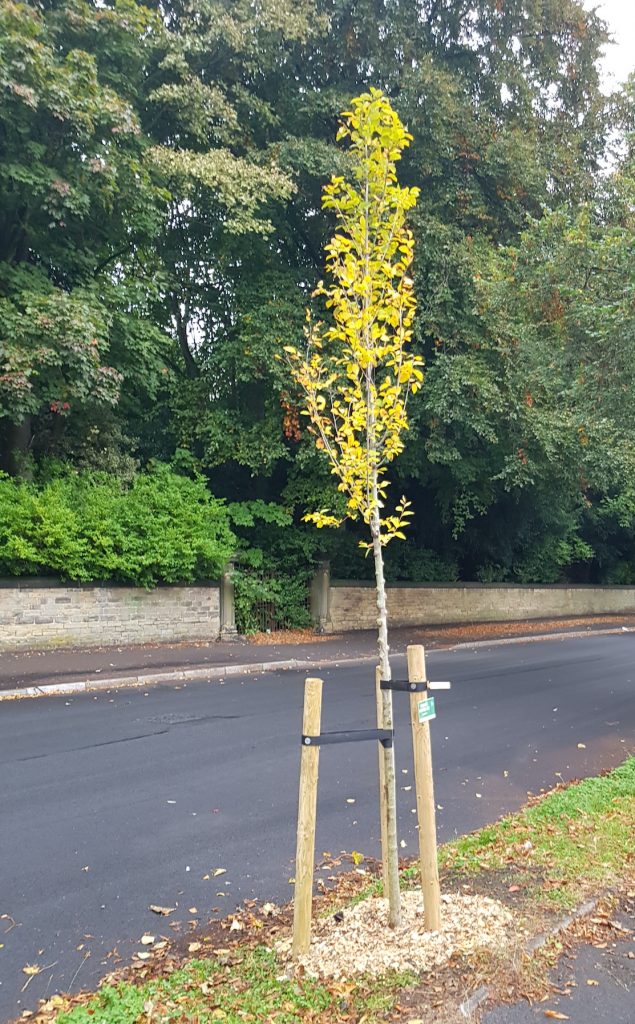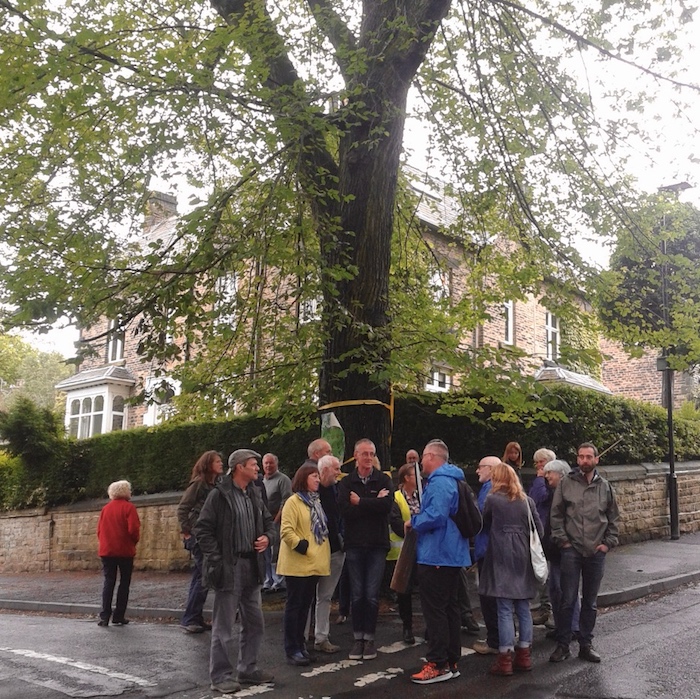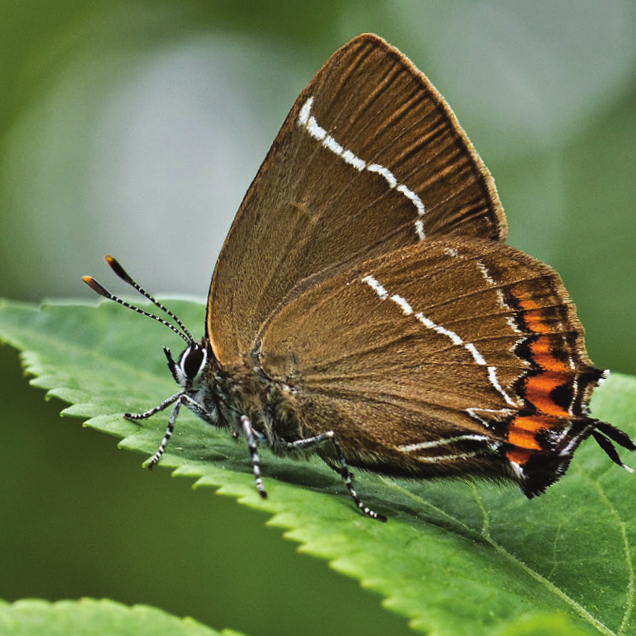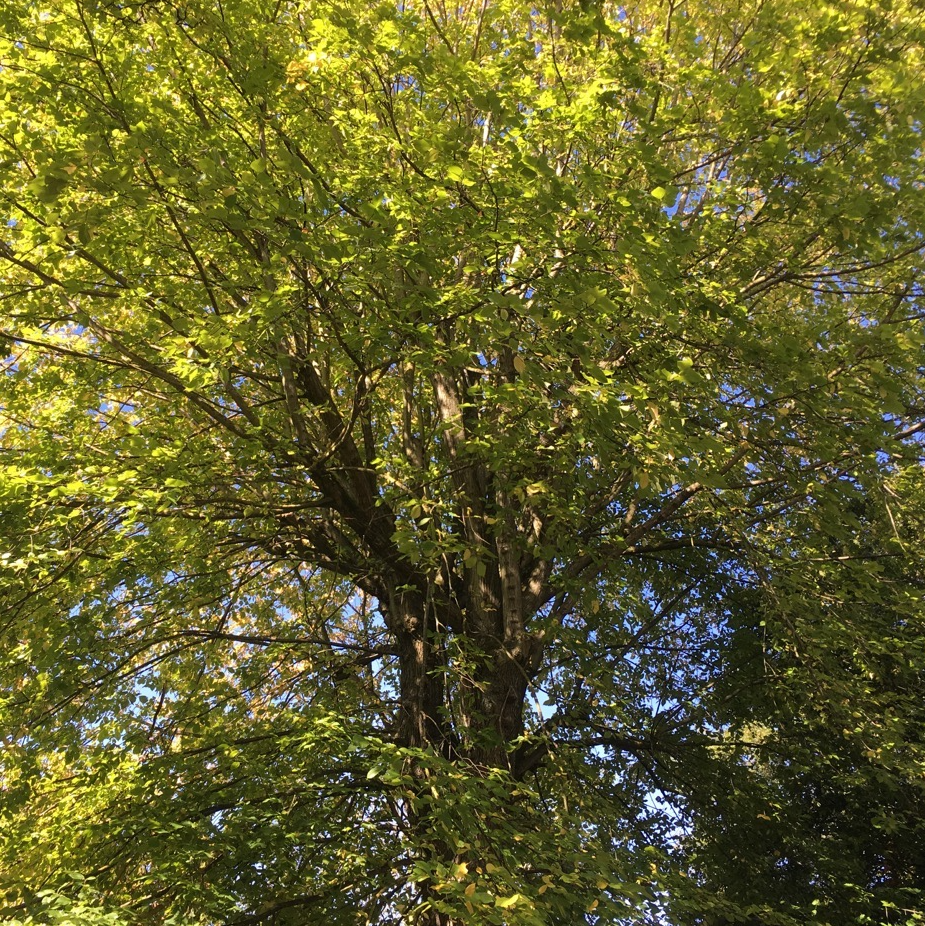
The Elms and Hairstreaks project seeks to increase DED (Dutch Elm Disease) resistant elms in the NESST area, as well as wider Sheffield. Building on our successful work with Sheffield and Rotherham Wildlife Trust in 2021, on the Buckthorn for Brimstones Initiative, in 2022 we partnered on the Elms and Hairstreaks Initiative. Together we bulk purchased 50 large Wingham Elm saplings and sold them to the Sheffield public, to plant in their gardens and on their land. In 10 to 20 years time, these 50 trees will further add to the DED resistant elm habitat across Sheffield, providing further opportunity for the White Letter Hairstreak butterfly population to stabilise and expand. Details of the initiative, and the online talk about the topic can be found here: Elms and Hairstreaks Initiative – Sheffield & Rotherham Wildlife Trust (wildsheffield.com)

Some background to this initiative: Our predecessor organisation, Save Nether Edge Trees (SNET) fought a three year battle from 2016 to save the special and now famous Chelsea Road elm tree (see left). At that point, the NESST geographic area had just four Dutch Elm Disease (DED) resistant elms as street trees, and the Council refused to plant elms as street tree saplings.
After we won the Sheffield street tree battle, this has all turned around. NESST has worked with Sheffield Council and Amey to persuade them to use elm saplings when replacing dead and dying street trees. Elms have also made up a significant proportion of the additional street trees that NESST has coordinated the funding for. Now, in early 2024, in the same geographic area, we have 76 DED resistant elm street trees. You can see the difference made in the following map: DED resistant elms in the NESST area – Google My Maps (The green trees are the original four, the purple are the additional 72)
The current total of 76 is 3.1% of all the NESST area’s street trees, and we have a vision to reach 5% by 2030, so around 130 street tree elms by then. It means that, in 30 to 40 years time, this will make our part of Sheffield one of the greatest concentrations of DED resistant elms outside of Brighton.
Elms as a species were decimated in the UK following the import of a virulent new DED strain in 1964, and nearly all UK elms died between then and today. Bringing back the elm to the UK has been the lifes work of some dedicated people, and NESST is proud to be playing our part. More importantly, the concentration of DED resistant elms will provide fantastic future habitat for the White Letter Hairstreak butterfly, which features in the NESST logo.
The caterpillar of the White Letter Hairstreak feeds solely on elms, and so has declined massively over the last 60 years, as all the elms died. There is a small and self sustaining relict colony of the butterfly on the Chelsea Road elm tree. If you stand looking at the tree on a sunny day in mid-July each year for long enough, you will see the butterfly from a distance, flying in the canopy. When all the new elms reach the right size in 10 to 20 years time, this will provide fantastic habitat for the colony to expand significantly, something it hasn’t had chance to do for a very long time.
This is practical conservation in action, and NESST is proud to be leading the way in protecting and increasing the biodiversity of the area. Thinking globally, and acting globally.

